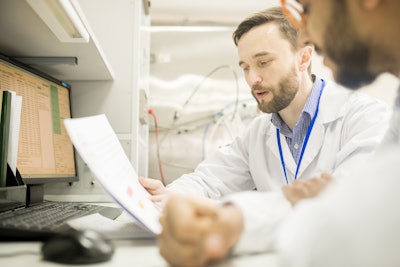
Validating products in a commercial egg setting is critical when proving effectiveness and value. However, there are critical questions that should be asked before the trial begins.
Topics to consider before testing products in commercial layer systems was discussed by Tammy Baltzley, Provimi Strategic Account Manager, at the 2022 Multi-State Poultry Feeding and Nutrition Conference and Danisco Animal Nutrition & Health’s Technical Symposium.
Companies often ask researchers to validate many different products and services such as food additives, nutritional programs and ingredients. Within that evaluation, there will be goals to assess such as product efficiency, impact on animal husbandry, mortality, forage environment, quality parameters or cost reduction.
Approaching these situations by asking the right questions and planning appropriately is key to reaching a goal and evaluating the success of a product in a commercial layer system, explained Baltzley.
What is success?
“The first thing one should do is outline the objective and question what success looks like. Can I clearly define success?”, she stated. “It is extremely hard to develop a product that resolves the targeted issue 100% of the time, but can we make a product that is good enough to make a significant impact?”
To understand what success looks like, one must understand what failure looks like, and if failure can also be clearly defined.
Evaluating what data needs to be collected to define success and failure will be important in establishing the trial’s objective and determining if the goals of the project are obtainable, explained Baltzley.
Another aspect to consider is if the potential goal is based on current information. For example, if historical information is being used, we should consider if it is still relevant because programs, procedures, equipment, genetics and nutritional programs are always changing.
Is the data collection all-encompassing?
“A critical question to ask is if you are collecting enough data from appropriate time points,” said Baltzley.
For example, if you are collecting data for a product that could be affected by outdoor temperatures in the summer, but not in the winter, the data will not actually be relevant when explaining why it does or does not work, she continued. Collecting data over years and various seasons using different breeds in many types of housing is ideal.
Considering the potential value of a product, outside of the depicted goal, could change the amount of data collected or the way the data is collected. While a company may only be interested in improving gut health, for example, the product could offer more value.
Collecting more data to fully understand what the product could do is a good idea, explained Baltzley.
An additional point to consider is if a standardized sample can be collected during the trial. “I have worked in the lab, and I have worked in real world production. Getting a standardized sample all the time is not always realistic and we need to get as close as possible. We want to be comparing apples to apples and not apples to pears,” she stated.
Who is going to do what?
Determining who is responsible for data collection, consolidation and analysis is crucial before the trial begins.
Additionally, preventative steps need to be in place to minimize errors during the trial. However, there should be preparation for mistakes to be made. Everyone that could potentially come into contact with the trial, including farm employees or third-party workers, need to be aware of a trial occurring to prevent possible mistakes.
“If mistakes are made, how do we account for them? For example, if this scenario happens, we can move forward, but if that scenario happens, the trial must stop.”

















